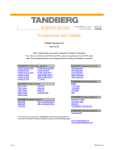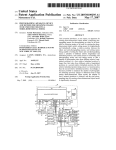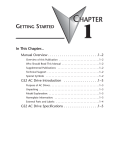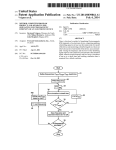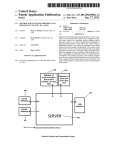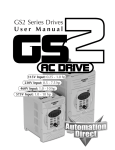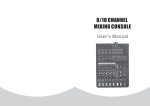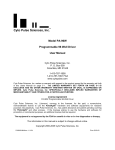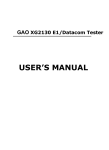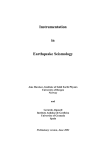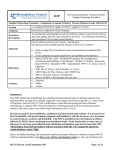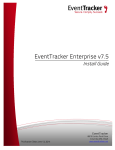Download Smoke detector testing
Transcript
US008466800B1 (12) Ulllted States Patent (10) Patent N0.: Billman (54) (45) Date of Patent: SMOKE DETECTOR TESTING 5,905,438 A . - lnvemor- 13281111)’ Jay Blllmall, San AIIIOIHO, TX ( (73) ' _ Assrgnee: ) United Services Automobile Association (USAA), San Antonio, TX (US) 10/2000 6,172,612 B1 l/200l 21 Notice: Subject to any disclaimer, the term of this patent is extended or adjusted under 35 U_S_C_ 154(1)) by 743 days_ Hoshi ......................... .. 504/131 OdachoWski 6,288,637 B1,. 9/2001 Thomas et a1‘ “““““““ “ 340/506 6,838,988 B2* 7,397,359 B2 2006/0229108 A1* l/2005 LennartZ et al. ....... .. 340/539.26 7/2008 Sparacino 10/2006 Cehelnik .................. .. 455/5691 2007/0080819 A1 2008/0291036 A1 4/2007 Marks et al. 11/2008 Richmond 2009/0174562 Al* (*) Jun. 18, 2013 5/1999 Weiss et a1. 6,140,269 A * (75) US 8,466,800 B1 7/2009 Jacobus et al. ........... .. 340/636.l OTHER PUBLICATIONS FirstAlert User’s Manual Remote Flashlight Test Smoke Alarm With Silence Feature (SA88B, SA88C) & Remote Flashlight Test Smoke APP 1.NO.Z 12/2471 417 Alarm with Silence Feature and 2-Year Extended Life Battery Filed: First Alert User’s Manual Smoke and Fire Alarm, Remote Flashlight (SA89B, SA89C). (22) Oct. 8, 2008 Test Smoke Alarm & Remote Flashlight Test Smoke Alarm With Related US. Application Data (62) (51) of application No. 12/139,901, ?led on Jun. Int Cl Escape Light Feature (models SA90B, SA150B). * Cited by examiner Primary Examiner * Brian Zimmerman ASSl'SZLlI’lZ Examiner i James (52) (58) us CL (74) Attorney, Agent, or Firm * Brooks, Cameron & USPC ....................... .. 340/636.1; 340/500; 340/628 Hue/b50113 PLLC Field of Classi?cation Search USPC ............... .. 340/500, 540, 603, 627, 628, 633, (57) 340/634 See application ?le for complete Search history, A testing device is provided that may be attachable and detachable from a smoke detector. The testing device may ABSTRACT References Cited have a rod that pushes a testing button on the smoke detector. The testing device may have a li t detector Which Will actu U.S. PATENT DOCUMENTS ate the rod to push the testing button if the light from an appropriate remote control or other light source is directed 56 Bellavia et a1. ............. .. 340/514 onto it, in order to verify that the smoke detector is operating 4,827,244 A * 5/1989 4,827,444 A 5/1989 Akiyama et a1. properly Without manually pushing the testing button. The 4,870,394 A * 4,901,056 A * 9/1989 2/1990 4,954,816 A 9/1990 Mattison testing device may store a unique identi?er (1D) and generate and transmit data pertaining to results of the testing of the Corlet a1. .... .. 340/630 Bellavia et a1. ............. .. 340/514 5,140,269 A * 8/1992 5,283,816 A 5,594,410 A 2/1994 Gomez Diaz l/l997 Lucas etal. Champlin ................... .. 324/433 smoke detector. 21 Claims, 5 Drawing Sheets 137 130 139 A O US. Patent Jun. 18, 2013 Sheet 1 of5 US 8,466,800 B1 137 130 1 39 FIG. 1 source 210 Test circuit 122 2 O FIG. 2 US. Patent Jun. 18, 2013 Sheet 2 of5 US 8,466,800 B1 350 ¢ Computing device 370 Q FIG. 3 5'10 510 B 510 C 530 A 550 530 B 530 C 510 530 Computing N N device 570 5 0 FIG. 5 US. Patent Jun. 18, 2013 Sheet 3 of5 US 8,466,800 B1 410 Attach testing device to smoke detector i Shine light onto testing device using 420 / remote control; detect light at testing device i 430 Trigger test circuit; actuate rod on testing / device; rod pushes testing button on smoke detector to test smoke detector i 440 Testing device generates data pertaining to test i 450 Provide data to remote control i 460 Remote control receives and stores data i 470 Provide data to computing device for storage, display, analysis, etc. / 480 Detach testing FIG. 4 device from @ smoke detector US. Patent Jun. 18, 2013 Sheet 4 of5 US 8,466,800 B1 610 Attach testing devices to smoke detectors 1 620 Shine light onto one of the testing devices / using remote control; detect light at testing device i 630 Trigger test circuit; actuate rod on testing / device; rod pushes testing button on smoke detector to test smoke detector i 640 Testing device generates data pertaining to test, including unique ID i 650 Provide data to remote control i 660 Remote control receives and stores data l Provide data to computing device for storage, display, analysis, etc. / 670 680 / Detach testing FIG. 6 device(s) from M smoke detector(s) US. Patent Jun. 18,2013 Sheet 5 005 |r __________________________ __: | i : : 704 System Memory ' ' ' i Removable Storage i 708 : : Non-Removable Storage 710 | | . vo'ah'e i i I US 8,466,800 B1 Processing Unit 702 | i Output Device(s) 716 l I Non-VolatHe l : l : : | I | ___________________________ __l Input Device(s) 714 Communication Connect|on(s) 712 \|— US 8,466,800 B1 1 2 SMOKE DETECTOR TESTING identify key features or essential features of the claimed sub ject matter, nor is it intended to be used to limit the scope of the claimed subject matter. CROSS-REFERENCE TO RELATED APPLICATIONS BRIEF DESCRIPTION OF THE DRAWINGS The present application is a divisional patent application of US. patent application Ser. No. 12/139,901 ?led Jun. 16, The foregoing summary, as Well as the folloWing detailed description of illustrative embodiments, is better understood When read in conjunction With the appended draWings. For 2008, the entirety of Which is hereby incorporated by refer ence herein. Further, this application is related by subject matter to that disclosed in the following commonly assigned the purpose of illustrating the embodiments, there are shoWn in the draWings example constructions of the embodiments; application, the entirety of Which is hereby incorporated by reference herein: US. patent application Ser. No. 12/247,405, ?led concurrently hereWith and entitled “SMOKE DETEC hoWever, the embodiments are not limited to the speci?c TOR TESTING”. that may be used for smoke detector testing; methods and instrumentalities disclosed. In the draWings: FIG. 1 is a block diagram of an implementation of a system FIG. 2 is a diagram of an implementation of a smoke BACKGROUND A smoke detector is a device that detects smoke and issues an alarm to alert nearby people that there is a potential ?re. Because smoke rises, most smoke detectors are mounted on the ceiling or on a Wall near the ceiling. Virtually all modern smoke detectors come equipped With a test button that acti detector testing system; FIG. 3 is a block diagram of another implementation of a system that may be used for smoke detector testing; 20 FIG. 4 is an operational ?oW of an implementation of a detected. Such testing is may be used to verify that the smoke method that may be used for smoke detector testing; FIG. 5 is a block diagram of another implementation of a system that may be used for smoke detector testing; FIG. 6 is an operational ?oW of another implementation of a method that may be used for smoke detector testing; and FIG. 7 is a block diagram of an example computing envi ronment in Which example embodiments and aspects may be detector is Working properly. Such detection circuitry usually implemented. vates a test function. The purpose of the test function is to provide a means to test the poWer supply and/or the associated 25 detection circuitry prior to actual smoke having been includes a manually operable push button sWitch for the pur pose of initiating the detector test function. Some smoke detectors include an integrated photosensor. A control beam of incident electromagnetic energy can be 30 FIG. 1 is a block diagram of an implementation of a system 100 that may be used for smoke detector testing. A smoke detector 110 is provided and may be any conventional smoke provided from a remotely located portable source such as a ?ashlight. Directing the beam of radiant energy from the ?ashlight against the smoke detector’s photosensor causes 35 SUMMARY A testing device is provided that may be attachable and 40 45 properly Without manually pushing the testing button. The testing device may store a unique identi?er (ID) and generate and transmit data pertaining to results of the testing of the 50 red (IR) light from a remote control. The IR light may trigger the testing device to test the smoke detector. In an implementation, the remote control may be an IR enabled device. The remote control may be integrated Within a mobile device such as a mobile phone, personal digital assistant (PDA), or a handheld computing device. In an implementation, the remote control may be integrated 55 Within or in communication With a computing device such as a personal computer (PC), a mobile phone, PDA, or handheld computing device. The remote control and/or the computing device may collect, store, analyZe, and/or display data per taining to the testing of the smoke detector With the testing 60 device. This summary is provided to introduce a selection of con cepts in a simpli?ed form that are further described beloW in the detailed description. This summary is not intended to residence or business. Although the illustrative embodiments described herein describe the testing of a smoke detector, any type of detector or alarm device may be tested, such as a ?re detector, a heat detector, and a carbon monoxide detector. It is contemplated that any type of detector With a test circuit or testing button may be used With the example embodiments and aspects described herein. Generally, for example, the smoke detector 110 may have onto it, in order to verify that the smoke detector is operating smoke detector. In an implementation, the testing device may receive infra detector, such as a residential or business smoke detector that is poWered by batteries or is Wired into the circuitry of the the smoke detector to initiate a test sequence. detachable from a smoke detector. The testing device may have a rod that pushes a testing button on the smoke detector. The testing device may have a light detector Which Will actu ate the rod to push the testing button if the light from an appropriate remote control or other light source is directed DETAILED DESCRIPTION 65 a circular plastic housing 111 With a front side 112 and a rear side 113. The housing 111 has in the region of the front side thereof a plurality of slots 116 Which permit the entry of smoke, heat and the like into the housing 111 and permit an audible alarm sound generated by the smoke detector to leave the housing 111. In approximately the middle of the front side of the housing 111 is a push-to-test button 115 (referred to herein as a “testing button”), Which can be manually pushed to trigger an alarm, via a test circuit 122 (shoWn in FIG. 2), in order to verify that the smoke detector 110 is operating prop erly. Near the testing button 115 may be an operating light emitting diode (LED) 119 Which may periodically ?ash to indicate the smoke detector 110 is operating. A testing device 130 is separate from the smoke detector 110 and is removable such that the testing device 130 may be attachable and detachable from the smoke detector 110. The testing device 130 may have a rod 135 that pushes the testing button 115. The testing device 130 may have a light detector 137 Which Will actuate the rod 135 to push the testing button 115 if the light from an appropriate remote control or other light source is directed onto it, in order to verify that the smoke detector 110 is operating properly Without manually pushing the testing button 115. US 8,466,800 B1 3 4 The testing device 130 may store a unique identi?er (ID) and generate and transmit data pertaining to results of the testing of the smoke detector. In an implementation, the test devices include universal remote capabilities for other types of devices, Which alloW the remote control to control other devices beyond the device it came With. IR learning remotes ing device 130 may comprise a controller, a processor, one or can learn the code for any button on many other IR remote program modules, and/or storage, shoWn collectively as 139, that may be appropriately con?gured to perform such func tionality. For example, the testing device 130 may detect the alarm that results from the testing button 115 being pushed if the smoke detector 110 is operating properly. The testing controls. This functionality alloWs the remote control to learn functions not supported by default for a particular device, making it sometimes possible to control devices that the remote control Was not originally designed to control. It is contemplated that any of these types of remote controls may device 130 may record Whether or not an alarm Was detected be used in accordance With the examples and embodiments described herein. FIG. 3 is a block diagram of another implementation of a system 300 that may be used for smoke detector testing. A smoke detector 110 With an attached testing device 130 is pursuant to a test along With a date and time, for example. Such data may be provided to a remote control and/or a computing device as described further herein. The testing device 130 may be adapted to ?t on any type of smoke detector, as a ?at pack With probes (installed betWeen the connection points of the testing button 115) or as an extending piece, for example, that may be mounted on the smoke detector 110 over the testing button 115 or in proxim ity of the testing button 115. The testing device 130 may be attached to the casing of the smoke detector 110 by a user 20 using an adhesive or other mechanical means and/or hard Ware for example. The testing device 130 may be detached or otherWise removed from the smoke detector 1 1 0 by the user at any time. In an implementation, the testing device may be poWered by the smoke detector 110 or may be poWered by as one of the IR remote controls described above. Altema 25 batteries. FIG. 2 is a diagram of an implementation of a smoke detector testing system 200. The smoke detector 110 is con nected to a poWer source 210, such as an alternating current or direct current voltage source. The testing device 130 may comprise an electronic sWitch 232 and a physical (e.g., mechanical) switch 235. The electronic switch 232 may com 30 or handheld computing device for example. The remote con trol 350 and/or the computing device 370 may collect data diode or an infrared (IR) sensitive phototransistor for 35 pertaining to the testing of the smoke detector 110 With the testing device 130. In an implementation, the remote control 350 may receive data from the testing device 130, and may provide some or all of the data to the computing device 370. The remote control 350 and/or the computing device 370 may 40 store, analyZe, and/ or display the collected data. An example computing device is described With respect to FIG. 7. testing button 115 on the smoke detector 110. The electronic sWitch 232 may be activated by a light source 250, such as an IR light source. In an alternative implementation, When IR light is present, the electronic sWitch 232 may act as an electronic trigger that charges a test circuit 122 in the smoke detector 110, bypassing the testing button 115. In such a scenario, the physical sWitch 235 may not be used. A remote control may act as the light source 250 and may tively or additionally, the remote control 350 may be inte grated Within a mobile device such as a mobile phone, per sonal digital assistant (PDA), or a handheld computing device. It is contemplated that any light source that provides IR light may be used as the remote control 350. In an implementation, the remote control 350 may be inte grated Within or in communication With a computing device 370 such as a personal computer (PC), a mobile phone, PDA, prise the light detector 137 and may comprise a light detecting example. The electronic sWitch 232 may actuate the physical sWitch 235 comprising the rod 135 for example, to push the shoWn as receiving IR light 355 from a remote control 350. In an implementation, the presence of any IR light (e.g., for a predetermined amount of time such as at least one second) may trigger the testing device 130 to test the smoke detector 110. Alternatively or additionally, a certain frequency of IR light may trigger the testing device 130 to test the smoke detector 110. The remote control 350 may be an IR enabled device, such FIG. 4 is an operational How of an implementation of a method 400 that may be used for smoke detector testing. At 410, a testing device that is removable may be attached to a 45 provide IR light to the testing device 130. A remote control is smoke detector. At 420, a user may shine a light, such as IR light, onto the testing device using a remote control or other an electronic device, typically poWered by batteries, that is light source, and the testing device may detect the light. Upon used for the remote operation of a machine. Commonly, to televisions or other consumer electronics such as stereo 50 receiving the light, the testing device may cause a test circuit of the smoke detector to be triggered at 430. In an implemen tation, a rod of the testing device may be actuated at 430, and systems and video players. Remote controls for these devices the rod may push the testing button, thereby testing the smoke are usually small Wireless handheld objects With an array of detector. remote controls are used to issue commands from a distance At 440, the testing device may generate data pertaining to buttons for adjusting various settings such as channel, track number, and volume. Remote controls may be single channel (single-function, one-button) or multi-channel (normal 55 multi-function). Many remote controls communicate to their respective devices via IR signals. A near infrared diode may be used to emit a beam of light that reaches the device. Such a remote control may be used to emit a beam of light toWards to the 60 display, analysis, etc. In an implementation, the testing device may provide the data directly to the computing device. At any time, shoWn at 480, the testing device may be detached from the smoke detector, e.g., by the user. 65 system 500 that may be used for smoke detector testing. testing device 130. A 940 nm Wavelength LED is typical, although any Wavelength(s) of IR may be used. A universal remote is a remote control that can be pro grammed to operate various brands of one or more types of consumer electronics devices. Some universal remotes alloW the test, such as results, e. g., pass or fail, and date and time of testing, and provide the data to the remote control at 450. The remote control may be in a mode to receive data (e. g., a program mode) and may receive and store the data at 460 in associated internal or external storage and/ or may provide the data to a computing device at 470 for subsequent storage, FIG. 5 is a block diagram of another implementation of a the user to program in neW control codes to the remote con Multiple testing devices 530A through 530N, Where N may trol. Many remote controls sold With various electronic be any number, may be disposed on associated smoke detec US 8,466,800 B1 5 6 tors 510A through 510N, respectively. Each testing device ing environments may be used Where tasks are performed by may have a unique ID that may be stored in storage associated remote processing devices that are linked through a commu nications netWork or other data transmission medium. In a With the testing device. A remote control 550 may activate any one of the testing distributed computing environment, program modules and devices 53 0A-530N at a particular time by providing IR light 555 to the testing device, thereby testing the smoke detector associated With that testing device. The remote control 550 may be able to activate each of the testing devices 530A 530N. In an implementation, the same IR (e.g., frequency, duration, etc.) may be used to activate each of the testing other data may be located in both local and remote computer storage media including memory storage devices. With reference to FIG. 7, an exemplary system for imple menting aspects described herein includes a computing device, such as computing device 700. In its most basic con ?guration, computing device 700 typically includes at least devices 530A-530N. one processing unit 702 and system memory 704. Depending on the exact con?guration and type of computing device, A computing device 570, either integrated With the remote control 550 or separate from the remote control 550, may be in communication With the remote control 550, and may receive and store data associated With the tests of the smoke detectors 510A-510N. Each testing device may send its ID to the remote control 550 and/or the computing device 570 along With the data. The ID along With the associated data may be stored by the remote control 550 and/or the computing device 570. After receiving the data from the remote control system memory 704 may be volatile (such as random access memory (RAM)), non-volatile (such as read-only memory (ROM), ?ash memory, etc.), or some combination of the tWo. This most basic con?guration is illustrated in FIG. 7 by dashed line 706. Computing device 700 may have additional features and/or 20 550 and/or the testing device(s) 530A-530N, the computing device 570 may use tools, applications, and aggregators, for example, to store, analyZe, and/or display the data. FIG. 6 is an operational How of another implementation of a method 600 that may be used for smoke detector testing. At 610, testing devices may be attached to smoke detectors, one 25 testing device to each smoke detector. Each testing device may be removable and may have a unique ID. At 620, a user may shine a light, such as IR light, onto one of the testing devices using a remote control, to test associated smoke 30 detector. The testing device may detect the light. At 630, the test circuit of the associated smoke detector may be triggered responsive to the testing device detecting the IR light. In an implementation, the testing device’s rod may be actuated and may push the smoke detector’s testing button, thereby testing functionality. For example, computing device 700 may include additional storage (removable and/ or non-removable) including, but not limited to, magnetic or optical disks or tape. Such additional storage is illustrated in FIG. 7 by removable storage 708 and non-removable storage 710. Computing device 700 typically includes a variety of com puter-readable media. Computer-readable media can be any available media that can be accessed by computing device 700 and include both volatile and non-volatile media, and removable and non-removable media. By Way of example, and not limitation, computer-readable media may comprise computer storage media and communication media. Computer storage media include volatile and non-volatile, and removable and non-removable media implemented in any method or technology for storage of information such as 35 the smoke detector. computer-readable instructions, data structures, program modules or other data. System memory 704, removable stor age 708, and non-removable storage 710 are all examples of At 640, responsive to the test, the testing device may gen erate data such as an ID, results, e.g., pass or fail, and date and computer storage media. Computer storage media include, time of testing, and provide the data to the remote control at but are not limited to, RAM, ROM, Electrically Erasable 650. The remote control may store the data at 660 in associ 40 Programmable Read-Only Memory (EEPROM), ?ash ated internal or external storage and/or may provide the data to a computing device at 670 for subsequent storage, display, analysis, etc. In an implementation, the data may be provided memory or other memory technology, CD-ROM, digital ver satile disks (DVD) or other optical storage, magnetic cas directly to the computing device from the testing device. At netic storage devices, or any other medium Which can be used to store the desired information and Which can be accessed by any time, shoWn at 680, one or more of the testing devices may be detached from their associated smoke detectors. settes, magnetic tape, magnetic disk storage or other mag 45 computing device 700. Any such computer storage media may be part of computing device 700. Computing device 700 may also contain communication connection(s) 712 that alloW the computing device 700 to Exemplary Computing Arrangement FIG. 7 shoWs an exemplary computing environment in Which example embodiments and aspects may be imple mented. The computing system environment is only one 50 example of a suitable computing environment and is not communicate With other devices. Communication connec tion(s) 712 is an example of communication media. Commu intended to suggest any limitation as to the scope of use or nication media typically embody computer-readable instruc functionality. tions, data structures, program modules, or other data in a Numerous other general purpose or special purpose com puting system environments or con?gurations may be used. modulated data signal such as a carrier Wave or other transport 55 mechanism, and include any information delivery media. The Examples of Well knoWn computing systems, environments, term “modulated data signal” means a signal that has one or and/ or con?gurations that may be suitable foruse include, but more of its characteristics set or changed in such a manner as are not limited to, PCs, server computers, handheld or laptop to encode information in the signal. By Way of example, and devices, multiprocessor systems, microprocessor-based sys not limitation, communication media include Wired media tems, netWork PCs, minicomputers, mainframe computers, embedded systems, distributed computing environments that 60 include any of the above systems or devices, and the like. Computer-executable instructions, such as program mod media as used herein includes both storage media and com ules, being executed by a computer may be used. Generally, program modules include routines, programs, objects, com ponents, data structures, etc. that perform particular tasks or implement particular abstract data types. Distributed comput such as a Wired netWork or direct-Wired connection, and Wireless media such as acoustic, radio frequency (RF), infra red, and other Wireless media. The term computer-readable munication media. 65 Computing device 700 may also have input device(s) 714 such as a keyboard, mouse, pen, voice input device, touch input device, etc. Output device(s) 716 such as a display, US 8,466,800 B1 8 7 speakers, printer, etc. may also be included. All these devices detecting light at a ?rst one of the plurality of physically detachable testing devices; and are well known in the art and need not be discussed at length here. Computing device 700 may be one of a plurality of com puting devices 700 inter-connected by a network. As may be in response to detecting the light, testing a ?rst one of the associated plurality of preexisting detectors associated with the ?rst one of the plurality of physically detach able testing devices by remotely causing a rod on the ?rst one of the plurality of physically detachable testing appreciated, the network may be any appropriate network, each computing device 700 may be connected thereto by way of communication connection(s) 712 in any appropriate man ner, and each computing device 700 may communicate with devices to be actuated to push a testing button on the ?rst one of the associated plurality of preexisting detectors. 2. The method of claim 1, wherein each of the plurality of physically detachable testing devices has a unique identi?er. 3. The method of claim 2, further comprising generating a ?rst data set at the ?rst one of the plurality of physically detachable testing devices pertaining to a result of testing the ?rst one of the associated plurality of preexisting detectors, the ?rst data set comprising the unique identi?er of the ?rst one of the plurality of physically detachable testing devices and the result of testing the ?rst one of the associated plurality one or more of the other computing devices 700 in the net work in any appropriate manner. For example, the network may be a wired or wireless network within an organization or home or the like, and may include a direct or indirect coupling to an external network such as the lntemet or the like. It should be understood that the various techniques described herein may be implemented in connection with hardware or software or, where appropriate, with a combina tion of both. Thus, the methods and apparatus of the presently disclosed subject matter, or certain aspects or portions thereof, may take the form of program code (i.e., instructions) embodied in tangible media, such as ?oppy diskettes, CD ROMs, hard drives, or any other machine-readable storage medium wherein, when the program code is loaded into and 20 ?rst data set. 5. The method of claim 4, wherein storing the ?rst data set comprises storing the ?rst data set at a remote control or a computing device. executed by a machine, such as a computer, the machine becomes an apparatus for practicing the presently disclosed 25 subject matter. In the case of program code execution on programmable computers, the computing device generally includes a processor, a storage medium readable by the pro cessor (including volatile and non-volatile memory and/or storage elements), at least one input device, and at least one detachable testing devices; plurality of physically detachable testing devices, test 30 generating a second data set at the second one of the plu rality of physically detachable testing devices pertaining 35 testing devices; and providing the second data set to the remote control or the 40 computing device. 7. The method of claim 1, wherein the light comprises Although exemplary embodiments may refer to utiliZing infrared light generated by a remote control or a computing device. aspects of the presently disclosed subject matter in the context 45 8. A non-transitory computer-readable medium compris ing computer-readable instructions for detector testing, said computer-readable instructions comprising instructions that: detect light at a ?rst one of a plurality of physically detach able testing devices, wherein each of the plurality of physically detachable testing devices is powered by an aspects of the presently disclosed subject matter may be implemented in or across a plurality of processing chips or devices, and storage may similarly be effected across a plu to a result of testing the second one of the associated plurality of preexisting detectors associated with the second one of the plurality of physically detachable object-oriented programming language to communicate with of one or more stand-alone computer systems, the subject matter is not so limited, but rather may be implemented in connection with any computing environment, such as a net work or distributed computing environment. Still further, ing a second one of the associated plurality of preexist ing detectors associated with the second one of the plu rality of physically detachable testing devices; One or more programs may implement or utilize the pro cesses described in connection with the presently disclosed subject matter, e.g., through the use of an application pro a computer system. However, the program(s) can be imple mented in assembly or machine language, if desired. In any case, the language may be a compiled or interpreted language and it may be combined with hardware implementations. 6. The method of claim 5, further comprising: detecting light at a second one of the plurality of physically in response detecting the light at the second one of the output device. gramming interface (API), reusable controls, or the like. Such programs may be implemented in a high level procedural or of preexisting detectors. 4. The method of claim 3, further comprising storing the 50 rality of devices. Such devices might include PCs, network servers, and handheld devices, for example. Although the subject matter has been described in language speci?c to structural features and/or methodological acts, it is associated one of a plurality of preexisting detectors; and in response to the light detected, test a ?rst one of the associated plurality of preexisting detectors associated appended claims is not necessarily limited to the speci?c with the ?rst one of the plurality of physically detach able testing devices by remotely causing a rod on the ?rst one of the plurality of physically detachable testing features or acts described above. Rather, the speci?c features devices to be actuated to push a testing button on the ?rst and acts described above are disclosed as example forms of one of the associated plurality of preexisting detectors. 9. The non-transitory computer-readable medium of claim 8, wherein each of the plurality of physically detachable testing devices has a unique identi?er. 10. The non-transitory computer-readable medium of claim 9, further comprising instructions that generate a ?rst to be understood that the subject matter de?ned in the 55 implementing the claims. 60 The invention claimed is: 1. A detector testing method, comprising: physically attaching a plurality of physically detachable testing devices to an associated plurality of preexisting detectors, wherein each of the plurality of physically detachable testing devices is powered by an associated one of the plurality of preexisting detectors; 65 data set at the ?rst one of the plurality of physically detach able testing devices pertaining to a result of testing the ?rst one of the associated plurality of preexisting detectors, the ?rst data set comprising the unique identi?er of the ?rst one of US 8,466,800 B1 10 the plurality of physically detachable testing devices and the detachable testing devices to be actuated to push a test ing button on the ?rst one of the associated plurality of result of testing the ?rst one of the associated plurality of preexisting detectors. 11. The non-transitory computer-readable medium of preexisting detectors. 16. The system of claim 15, Wherein each of the plurality of physically detachable testing devices has a unique identi?er. 17. The system of claim 16, further comprising at least one claim 10, further comprising instructions that store the ?rst data set. 12. The non-transitory computer-readable medium of subsystem that generates a ?rst data set at the ?rst one of the claim 11, Wherein the instructions that store the ?rst data set comprise instructions that store the ?rst data set at a remote plurality of physically detachable testing devices pertaining control or a computing device. preexisting detectors, the ?rst data set comprising the unique to a result of testing the ?rst one of the associated plurality of 13. The non-transitory computer-readable medium of claim 12, further comprising instructions that: identi?er of the ?rst one of the plurality of physically detach able testing devices and the result of testing the ?rst one of the detect light at a second one of the plurality of physically associated plurality of preexisting detectors. detachable testing devices; 18. The system of claim 17, further comprising at least one subsystem that stores the ?rst data set. 19. The system of claim 18, Wherein the at least one sub system that stores the ?rst data set comprises at least one in response to the light detected at the second one of the plurality of physically detachable testing devices, test a second one of the associated plurality of preexisting detectors associated With the second one of the plurality subsystem that stores the ?rst data set at a remote control or a of physically detachable testing devices; generate a second data set at the second one of the plurality 20 of physically detachable testing devices pertaining to a result of testing the second one of the associated plural ity of preexisting detectors associated With the second one of the plurality of physically detachable testing devices; and the plurality of physically detachable testing devices; 25 the second one of the plurality of physically detachable testing devices; 30 15. A detector testing system, comprising: at least one subsystem that detects light at a ?rst one of a plurality of physically detachable testing devices, Wherein each of the plurality of physically detachable 35 plurality of preexisting detectors; and at least one subsystem that tests, in response to the detected ing a rod on the ?rst one of the plurality of physically at least one subsystem that generates a second data set at the second one of the plurality of physically detachable testing devices pertaining to a result of testing the second one of the associated plurality of preexisting detectors associated With the second one of the plurality of physi cally detachable testing devices; and at least one subsystem that provides the second data set to the remote control or the computing device. 21. The system of claim 15, Wherein the light comprises light, a ?rst one of the associated plurality of preexisting detectors associated With the ?rst one of the plurality of physically detachable testing devices by remotely caus at least one subsystem that tests, in response to the light detected at the second on of the plurality of physically detachable testing devices, a second one of the associ ated plurality of preexisting detectors associated With computing device. 14. The non-transitory computer-readable medium of claim 8, Wherein the light comprises infrared light generated testing devices is poWered by an associated one of a 20. The system of claim 19, further comprising: at least one subsystem that detects light at a second one of provide the second data set to the remote control or the by a remote control or a computing device. computing device. 40 infrared light generated by a remote control or a computing device.











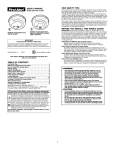

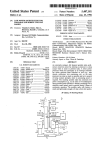
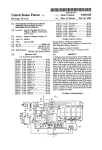

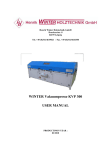
![[quote(var.text)]}](http://vs1.manualzilla.com/store/data/005937533_1-4dd3fe8a9b5a28fbfb6fbb268c8e3b66-150x150.png)
